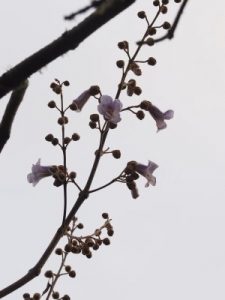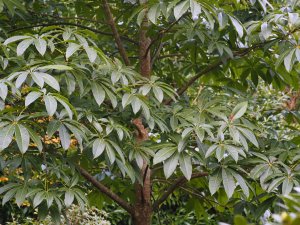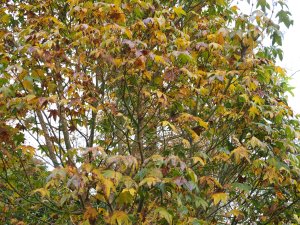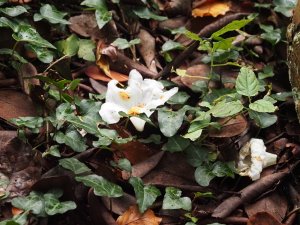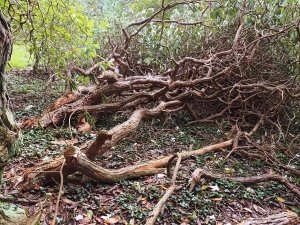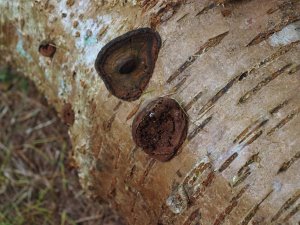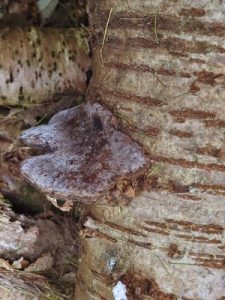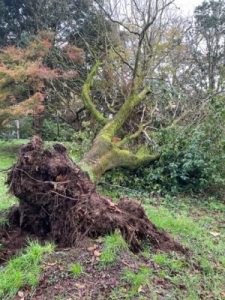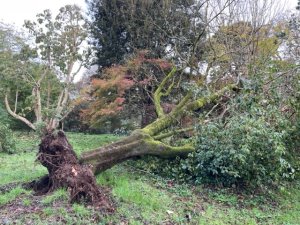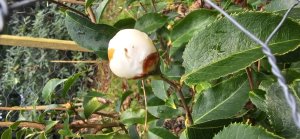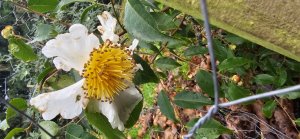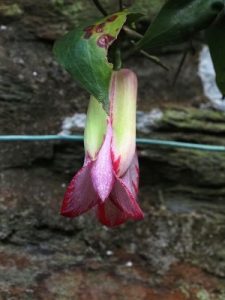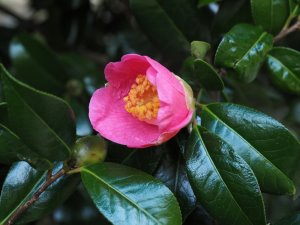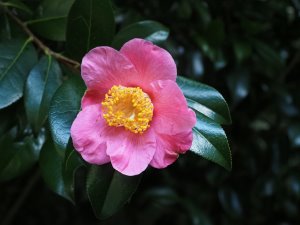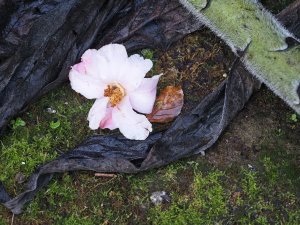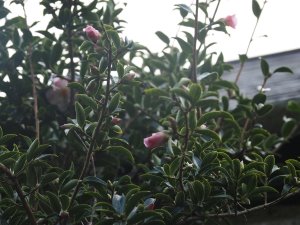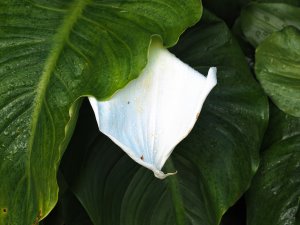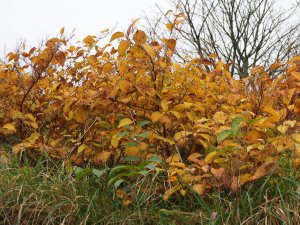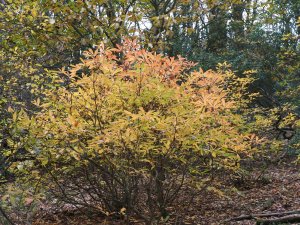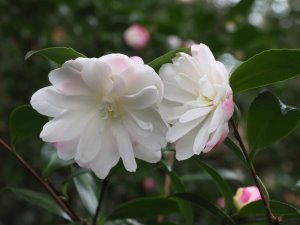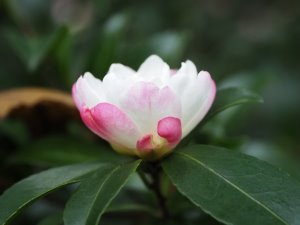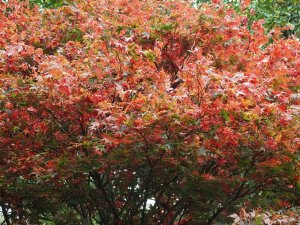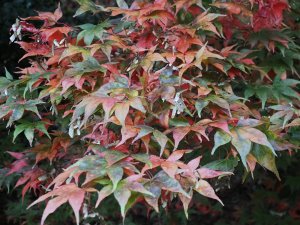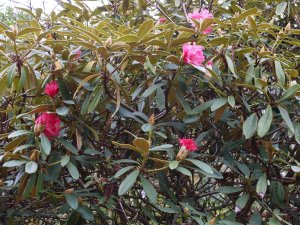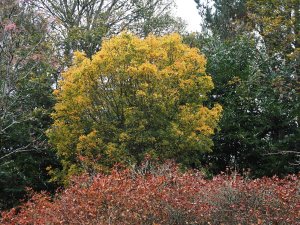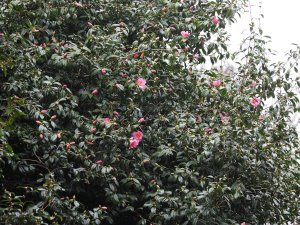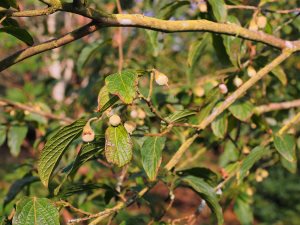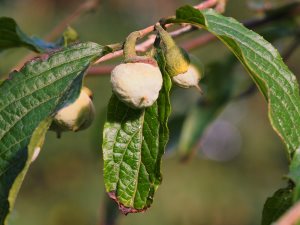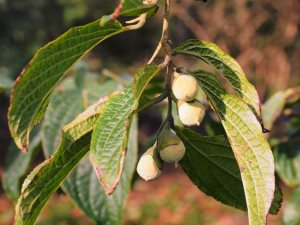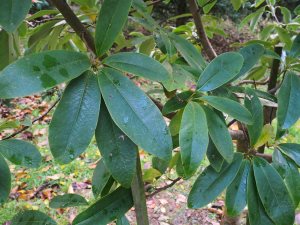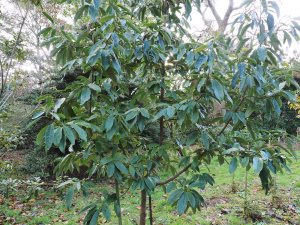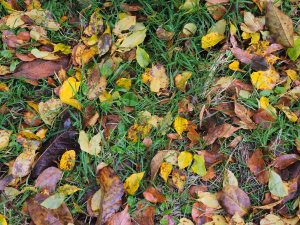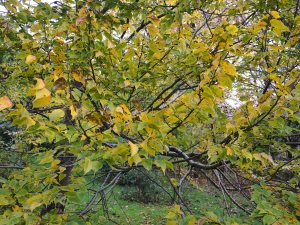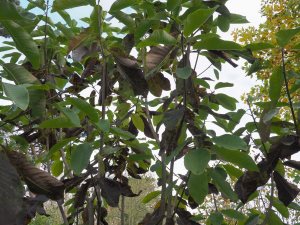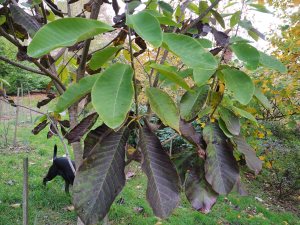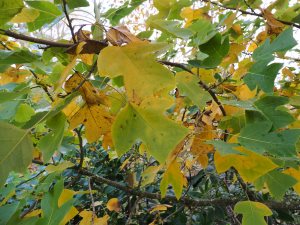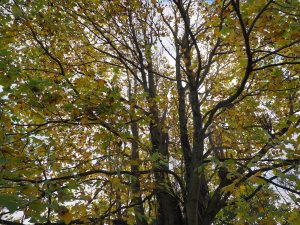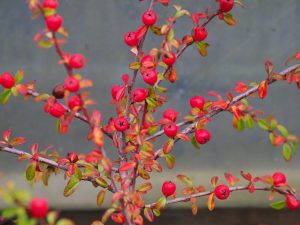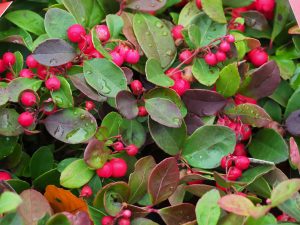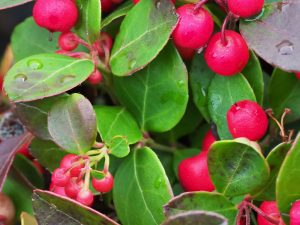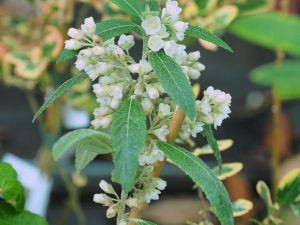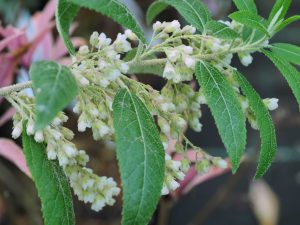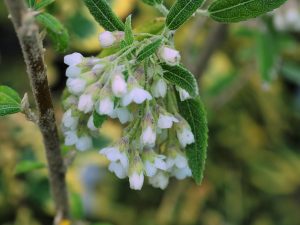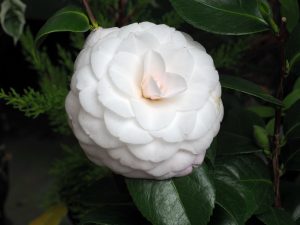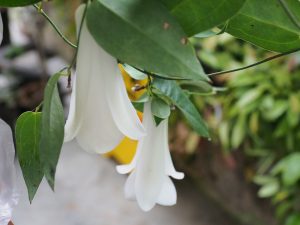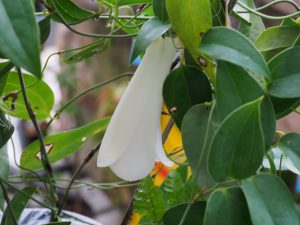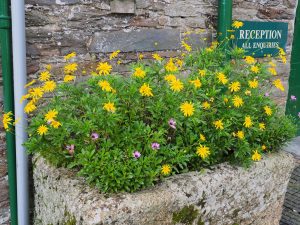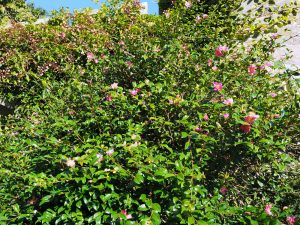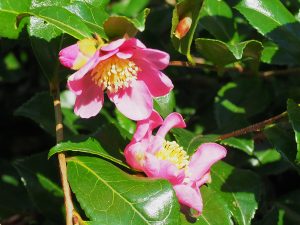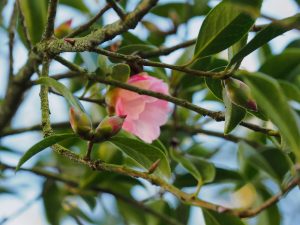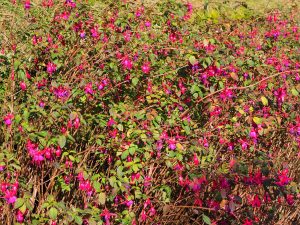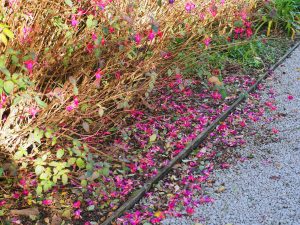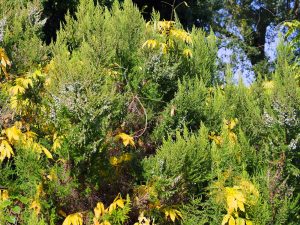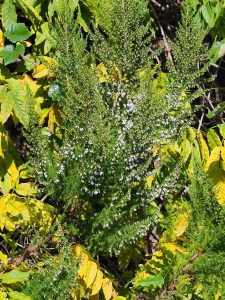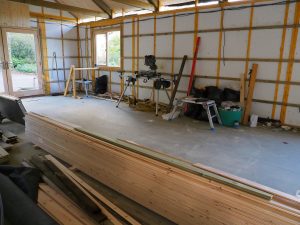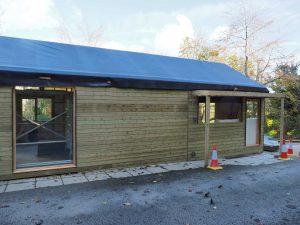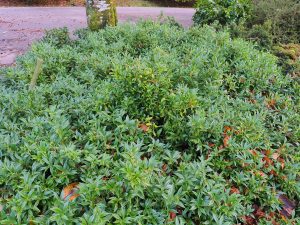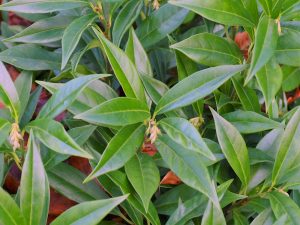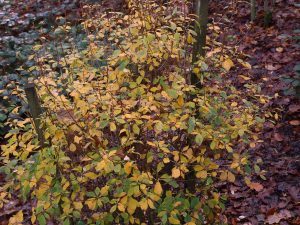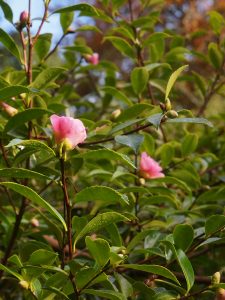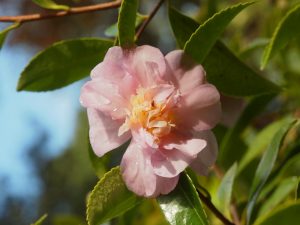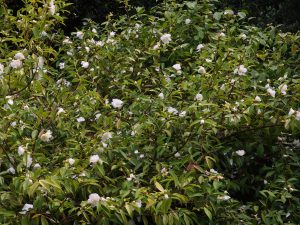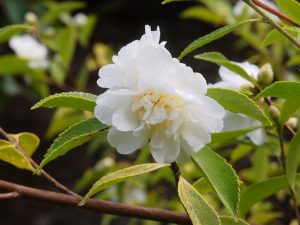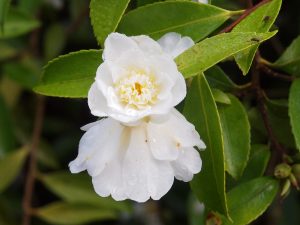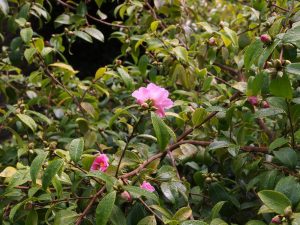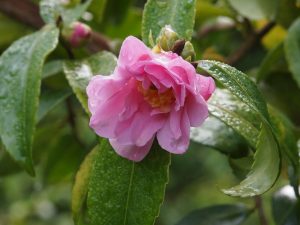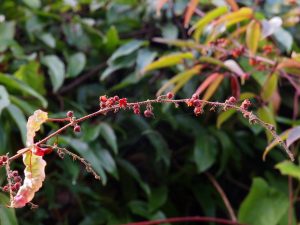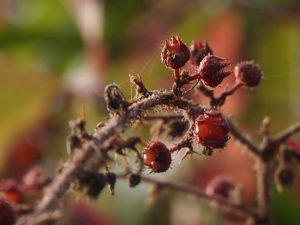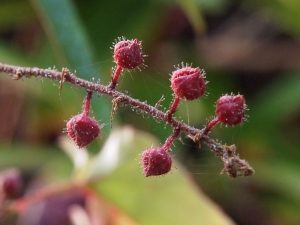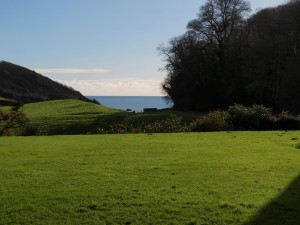2024 – CHW
Noticeably colder and snow down to the Midlands. The run of calm and mild weather is over soon.
Azalea ‘Glendoick Glacier’ covered in semi-double, pure white, flowers. It has performed in winter before but never this well.
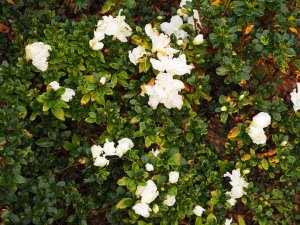
Another Storm Ciaran fallen acer tree which had gone unnoticed up until now. There was existing rot at the base of the tree so it was vulnerable. This was a 1991 planted tree and another very short lived acer.
Caerhays Castle, in Cornwall, has won the inaugural Historic Houses Collections Award, sponsored by Dreweatts.
In its inaugural year, the award attracted an overwhelming number of entrants, spanning the full range of historic house contents – from furniture to fabrics, timepieces to Titians. It was the remarkable mineral collection recently discovered at Caerhays Castle in Cornwall, however, that stood out to the judges.
The Williams Caerhays Mineral collection is the product of generations of collecting by the Williams family, predominantly in the Gwennap parish of Cornwall. They were well established as highly successful mining managers by the early 1700s, living at Burncoose House, and subsequently at Scorrier House. John Williams senior (1753-1841) and his son, John Williams junior (1777-1849), were largely responsible for creating the superb mineral collections at those two residences in the late eighteenth and early nineteenth centuries.
In 2008 Charles Williams, the current owner of Caerhays, met Courtenay Smale, a retired mining engineer and former President of the Royal Geological Society of Cornwall and the Royal Institution of Cornwall, with a view to re-establishing a mineral display in the empty cabinets. This was aimed at enhancing the visitor experience as part of the House Tour. The painstaking task of reinstating a display and cataloguing was onerous, in that the minerals were secreted throughout the castle’s old kitchen, old vegetable room, wine cellar, smoking room, and slop room. They bore no identification labels or catalogue.However, the Williams family ploughed on and are committed to continuing the already established practice of publicising the mineral collection through exhibitions, lectures, research with learned societies, and articles through such vehicles as international publications and academia.Charles Williams, owner of Caerhays Castle, said: We are very proud of the mineral collection at Caerhays it is world class and completely unique, we would not have been able to achieve this without the help and guidance of the unbelievably knowledgeable Courtenay Smale. Probably 99% of the population have no idea what a mineral looks like, they have no idea it comes from a Cornish copper or tin mine, many of them have no idea of the history of Cornwall…so it sets the Williams family and the collection in context.”Courtenay Smale, author and curator, said: “I was first contacted by Charles Williams back in 2009, and it wasn’t until we started to search throughout the castle that the minerals started to reappear. I spent a considerable amount of time identifying the specimens and cataloguing them.”
Who could say that our hated and most invasive weed (Japanese knotweed – Fallopia japonica) does not actually have good autumn colour? Here on a hedge at Vose Farm.
2020 – CHW
COVID creeps ever closer to Caerhays and Burncoose but we are actually no longer frightened and merely have the desire to carry on (if we can) regardless of how many children are sent home (unnecessarily) from school or the absurdities of ‘Test and Trace’ and all the three to five day delays in receiving the results. As testing gets better so more people have to isolate. The numbers of positive tests per 100,000 of population is increasing in Cornwall but we are no longer comparing ‘like with like’ as testing improves and increases. Outbreaks in schools/universities/factories distort the overall figures. The government is warming us up for more restrictions and Lockdown 3 in January. Turn off your app!
Survival of our businesses is now even more reliant on the strength and determination of our senior staff. They were brilliant in L1 and, now, the worm is turning whereby we no longer trust the truth of anything from the government propaganda machine. The Welsh, out of lockdown this week, are about as unsocially distanced as it is possible to be as I hear from Abergavenny. Trust and compliance with the rules is breaking down, and no surprises at that. The will to survive and preserve jobs and businesses runs deep but we will have to be terribly careful and have the sort of luck which I had two days ago!
Collected masses of ripe seed from Schefflera macrophylla in Forty Acres. This is not as good a form as the one which blew over recently near Georges Hut and has died but may yet reshoot from the base. The new growth does not have as good a brown velvety indumentum.
Also masses of seed collected from Zanthoxylum simulans also in the main clearing in Forty Acres (but none on the nearby Zanthoxylum piperitum which is much smaller growing). Strongly aromatic peppery smell.
Work at the Hovel progressing well.
2019 – CHW
Another sunny day. Perhaps the weather is on the turn after three very wet weeks? Styrax japonicus ‘Emerald Pagoda’ now leafless but with the seeds still hanging and one branch broken by the weight of the flowers or seeds.
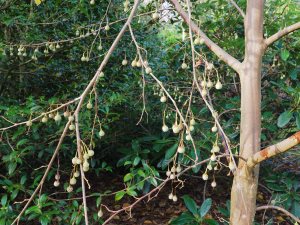
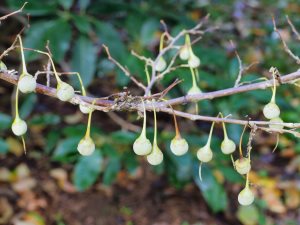
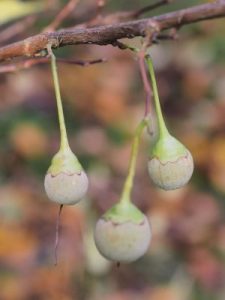
2018 – CHW
A Burncoose visit on a drab day but a quick trip around to see what was looking good.
Euonymus grandiflorus ‘Ruby Wine’ living up to its name with pink seed capsules. The best new autumn colour that I have seen for ages.
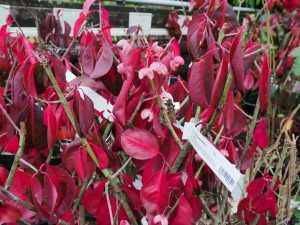
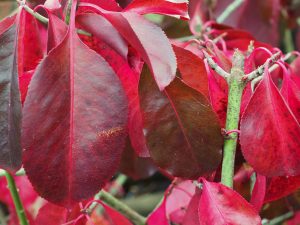
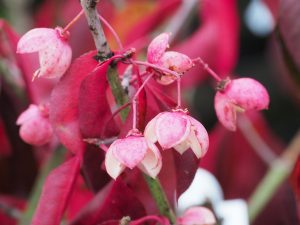
The granite trough outside the Marketing Office still has a fine display of osteospermum and Euryops chrysanthemoides (the African daisy) in mid/late November!
Enkianthus campanulatus ‘Wallaby’ is turning autumn yellow. A very dwarf growing variety which has yet to flower here. Needs more sun.
Another batch of Camellia sasanqua varieties is full out below the greenhouse. Here we have:‘Winters Toughie’ – a delicate light pink double which opens out flat.
Quite a nice show overall with four more varieties yet to perform. ‘Polar Ice’ is nearly out and seems very similar to ‘Snow Flurry’ except that it has a more drooping habit.Rubus ichangensis has tiny raspberries which I seem to be a bit too late for sadly. Large trailing trusses of fruit not all of which has yet ripened properly. Quite a nice climber for a wall none the less.
2015 – CHW
Work has started on the Nash arch on Battery Walk. This means we now have the pleasure of a portaloo and cabin in the Cutting. Dad keeps asking what it is doing there but, with Alzheimer’s, the question gets asked many times and the answer always forgotten. Typically, due to Natural England’s tardiness and obsession with ‘jobs for the boys’ rules, work has only now started at precisely the wrong time of the year.
1973 – FJW
Vase of November Pink in the house.
1932 – JCW
The best Sasanqua year I have seen. About 15 rhodo show bits of flowers of which Lutescens is the best.
1925 – JCW
C sasanqua has been fair, but a hard frost last night will finish them. Lapagerias remain the best as in 1918.
1918 – JCW
The old Sasanqua as good as it has ever been. Lapagerias fair, roses some, R decorum yet has flowers. Mucronulatum has a plant or two well out. Erica codonodes and darleyense show flower and so does Bob’s heath here and at Werrington, it is very nice and white.
1906 – JCW
C sasanqua good, lapagerias good, several daff with jonquil blood are up and a few others. Useful lot of roses now.




